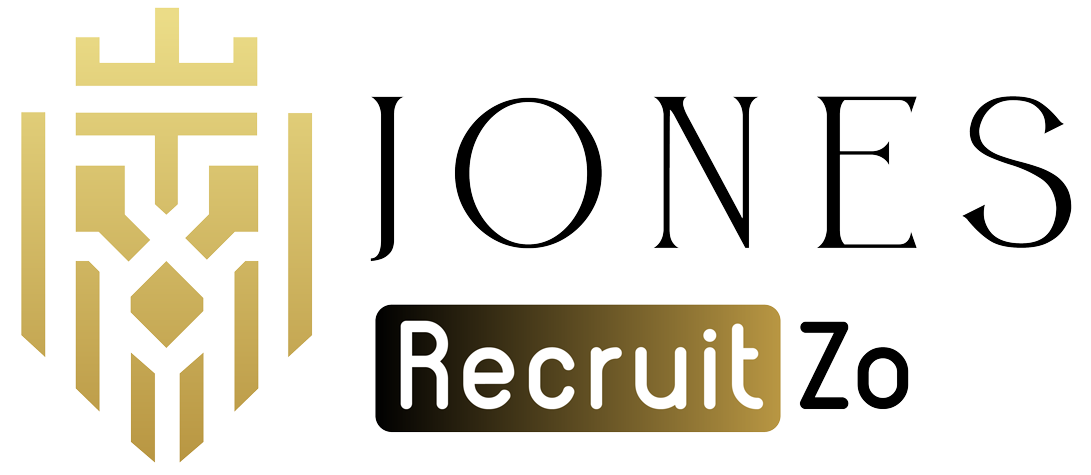What is Employee Turnover?
The turnover of employees is a critical aspect in the determination of the effectiveness of a business and more so human resource management. This involves the actions of employees within an organization and their turnover period, that is the time taken by an employee to leave the organizational job and be replaced by another new employee. Organizations monitor employee turnover rates for various reasons, such as measuring the stability of the workforce, assessing satisfaction in the workplace, and improving HR management practices.
The employee turnover ratio is one of the important parameters found within business analytics which aids to determine the retention and hiring strategies within an organization. These issues if not properly address will erode company’s productivity, morale and cost-effectiveness thus they are present a danger with their high or erratic employee turnover rates.
It is how much cost can be saved through how much effort if the employee churn meaning and what is employee turnover index is known and measured within the organization which helps to enhance and improve the work culture in the organization.
Why Employee Turnover Matters
In order to achieve growth and sustainability, it is essential to know why employee turnover matters. Having a high rate of employee turnover is consistent and thus, it raises the turnover cost because of recruitment, training and loss of productivity. What is more important is that it can decrease the level of morale among employees and that it can affect team relations. It is more economical to retain employees by positive employee retention practice than recruiting new hires repeatedly.
Monitoring employee turnover rate provides information on the lack of job satisfaction, poor management, and low employee involvement. Better retention enhances legitimacy, creates employee delight and augers well with long-term horizons. Effective measure of the turnover trend enables companies to know how to minimize risks and seek strategic planning in the matter of cases of employee departure.
What is a High Turnover rate?
High turnover rate can be defined as a situation where there is a mass exodus of employees in a certain time period, usually more than the industry average turnover rate. It is usually an indication of a fundamental issue of employee experience, absence of employee benefit, or a poor management practice. High employee turnover rate is usually an indicator of issues about culture or remunerations and businesses with low employee turnover are usually more stable and workable.
Types of Employee Turnover

The employee turnover has various types that can be distinguished with their different meanings to the organization. These classifications are significant in comprehending what employee turnover is and ensuring that management strategies target each type efficiently.
-
Voluntary Turnover
Voluntary turnover is the process by which an employee kayts his or hers employment with the organization under their on will. Personal issues, better employment offers, unhappiness or change of profession are all acceptable reasons behind voluntary turnover. Voluntary turnover relations also maintain that employee engagement, the environment in the workplace, and prospects for career advancement affect voluntary turnover. The rate of voluntary employee turnovers is usually high in particular organizations which indicate a red flag on such areas that the management has to improve.
-
Involuntary Turnover
Involuntary turnover occurs in law upon the resignation of an employee who is dismissed because of poor work behavior, retrenchment and reorganizations, or other organizational needs. The involuntary employee turnover may not necessarily be a bad thing as it does not always pertain to problems in the particular organization. Quite the opposite, it may happen in a company to support continued effectiveness and efficiency. Nevertheless, in a case whereby the rates of involuntary employee turnover is excessive, it may point to operational or managerial problems that require solutions.
-
Desirable Turnover
Desirable turnover is the turnover of employees that is beneficial to the organization. Such employees are often those that have been underperforming or those that have been misaligned to the company’s culture. Desirable turnover can be managed tactically to enhance productivity and morale of teams since it brings new blood and new ideas into the system.
-
Undesirable Turnover
Unfavorable refers to a situation where an organization loses its key staff. This is a very common type of employee turnover which can have negative impacts on the organization due to the loss of knowledge, skills and other inherent abilities. Furthermore, maintaining a high level of undesirable turnover is often an indication of more serious underlying problems within the organization and is a clear call for more effective retention measures.
-
Internal Turnover
Internal turnover is associated with the transfer of employees to another job in the firm. This is in the form of promotion, lateral or a departmental move. It also can be taken as the chances of growth and internal development that has its positive effects on employee morale and loyalty to the organization.
How to Calculate Employee Turnover Rate

It is also important to know how to compute the employee turnover rate in an organization, as this will help explain what employee turnover is in practical terms. This is done by establishing the total number of employees who exited within a specific time frame and expressing this figure as a fraction of the total workforce.
-
Find your Total Number of Employees
Begin by assessing the total workface size at the end of the period concerned. This figure will become the point of reference for computing the employee turnover ratio.
-
Divide and Multiply
Taking the amount of employees that exited the workplace during the period, divide this fraction by the amount of the employers that were present at the start. This simple equation creates the rudimentary turnover formula.
-
Calculate the turnover rate percentage
Take the figure from the last stage and multiply it by 100 in order to express the employee turnover in percent. This figure is useful for the management as it shows the losses in relation to the total number of employees and enables them to see progress or regress in this indicator over some time.
Metrics to Calculate Employee Turnover Rate

The analysis of employee turnover can be carried out with the help of a series of key analytics that give a detailed performance of the workforce stability. These involve total turnover rate, voluntary rate, involuntary rate, turnover cost, and average employment span which enables organizations to be able to see a trend to act promulgately.
-
Overall Turnover Rate
This indicator demonstrates the sum of the employee turnover rate and how successful a company holds employees. The overall high turnover rate may be associated with the ineffective employee retention strategies and may be a sign that something has gone wrong with the company culture or management structure. It is calculated by breaking down the separation of employees by the average size of the workforce and multiplying it by 100, which is a wide gauge of organizational level of retention effectiveness.
-
Involuntary Turnover Rate:
This rate is only a measure of forced exits. An upsurge of involuntary separations can be a red flag of the weakness in hiring or leadership and the overall turnover cost. Seeking to improve these aspects may lead to reduced employee attrition and the construction of the more effective, stable labor forces comprising of engaged employees. The calculation is done as the ratio of the number of involuntary separations and the average number of employees multiplied by 100, which gives an idea about the process of hiring people and the stability of management.
-
Voluntary Turnover Rate
Voluntary turnover rate indicates employee engagement and satisfaction. Resignation trends, which are common to an organization, can indicate a cultural or management issue and approves of the poor image of the employee experience, particularly within competitive industries, with highly competitive employee retention issues. The formula is the ratio of the voluntary resignation to the average number of employees multiplied by 100. This indicator allows evaluating satisfaction, engagement, and effectiveness of the organizational culture in general.
-
Turnover Cost
The turnover cost comprises recruiting, onboarding, productivity losses, and training. It may shoot up in companies where there is high rate of employee turnover and that is why proactive employee retention strategies are necessitated as a financial need of keeping companies profitable and in business.
-
Average Length of Employment
This assists in measuring employee satisfaction and engagement. The longer the average the more positive the employee experience is and the better the employee retention is but a shorter span usually points to a high employee turnover level or more serious cultural and leadership problems.
How To Analyze Your Turnover Rate
Understanding the employee resignation rates and turnover patterns helps in pinpointing specific problems that may be present in the organization. A large percentage of voluntary resignations, for instance, may point to dissatisfaction among the workforce, whereas a high rate of forced separations may point out problems with performance or with fit. Analysis can involve reviewing the level of turnover in the organization compared to best practices in the industry. Trends in both voluntary and involuntary turnover rates are also assessed, as well as turnover within departments. Over an extended period, companies may be able to come up with effective means to manage employee turnover through assessment and evaluation of the strategies.
Why Should a Company Track its Employee Turnover?
Monitoring the employee turnover rate assists businesses to be law compliant, enhance employee engagement as well as enhance a peaceful working environment. It also single outs red flags such as poor employee experience, which may affect retention and the performance of organizations.
-
Identifying Potential Problems
Data monitoring can assist in revealing trends such as employee burnout or dissatisfaction. An early intervention reduces turnover cost and increases employee retention. Earlier information may also result in an employee experience, which results in decreased attrition and, consequently, involvement.
-
Improving Employee Retention
Finding out the reason people are leaving will help companies implement better employee retention strategies – such as well onboarding, rewards, or growth plans. Such measures directly cut down the voluntary employee turnover and enhance organizational stability in the long run.
-
Enhancing Company Performance
The minimization of high turnover amongst employees reduces disruptions. Companies with high levels of employee engagement and best employee retention strategies are more likely to achieve a better performance, profitability, and good correlation between the business objectives and output at team performance level.
-
Legal and Compliance
The high turnover can be an indication of a more serious compliance or less dough discrimination situation. By monitoring turnover based on department or job or even demographic on a regular basis, companies can ensure that issues of biasness, workplace safety albatross, or bad labor practices are identified and delegated before costing the company to a law suit.
How to Reduce Employee Turnover

Reducing employee turnover rate is a key goal for organizations looking to foster a stable and motivated workforce. Here are some strategic methods to reduce turnover effectively:
-
Identify the right Candidates
Making the right recruitment is the first measure in reducing staff turnover. The chances of voluntary turnover can be minimized by bringing in candidates who fit the organization’s profile.
-
Recognize and reward performers
While shared objectives help a team focus on completing a project, the inclusion of recognition and reward practices should also work to enhance job satisfaction and consequently minimize turnover. Companies that reward performance and celebrate employee’s hard work tend to have more committed employees.
-
Design and convey a career path
Offering promotions and professional growth prospects is classifiable as a job retention strategy. When an organization provides career progression opportunities, it helps in decreasing worker turnover in that the employees will be focused towards achieving the goal of growing in ranks hence the interest in residing in the company for a longer period.
-
Offer competitive compensation
The importance of attractive salaries and benefits in employee retention cannot be overlooked. Periodically reviewing pay scales and ensuring that pays are competitive with the industry will discourage employees from engaging in work-related migration as a result of better salaries.
-
Provide employee benefits
Retention-friendly factors, such as health insurance or other benefits, flexible working hours, and training and development, are typically helpful. An effective employee benefits program increases employee loyalty while curbing employee turnover, hence making the recruitment of top performers less difficult.
FAQs
1) What does employee turnover mean?
Employee turnover is the measure of how many employees leave an organization and need to be replaced and over what period. This can consist of voluntary exits, which is when an employee decides that they no longer wish to work for the organization, and involuntary exits, which occur when an employee is required to leave the company.
2) How to calculate employee turnover?
To calculate employee turnover, divide the number of employees who left during a period by the total number of employees at the start of the period, then multiply by 100 to get the turnover rate as a percentage.
3) How To Analyze Your Turnover Rate?
In turnover analysis, understanding how turnover rates differ across organization and industries is only the first of a few steps; it also entails explaining often poor reasons for leaving, for example, in the case of voluntary turnover, and exploring the reasons for and patterns of loss and exit in the case of involuntary turnover.
4) How to Reduce Employee Turnover?
To minimize turnover rates, utilize best practice approaches to candidate sourcing, establish methods of rewarding and recognizing great performance, build a clear path on promotion, provide attractive salaries along with other perks ensuring that a comprehensive package is offered.














